As soon as we walked into the Alaska Native Heritage Center, we knew it was somewhere special. Leaving the city of Anchorage at the door, we were aware we had entered a different space.
Steeped in tradition, the Alaska Native Heritage Center is an educational and cultural institution created for all people of Alaska. Welcoming visitors from around the world, they share bits of their native heritage and culture.
The center opened in 1999, and it shares the heritage of Alaska’s 11 major cultural groups. There are things to see, do, and experience as we discovered some of the similarities and differences that make each of the cultural groups unique.
There are both indoor and outdoor things to do, so give the weather a bit of thought before you go. The outdoor area gives a peek into six clans: Athabascan, Inupiaq/St. Lawrence Island Yupik, Yup’ik/Cup’ik, Aleut, Alutiiq, and the Eyak, Tlingit, Haida, and Tsimshian peoples.
The Gathering Place at the Alaska Native Heritage Center
As we entered the large room, the “Gathering Place” or main stage stood in front of us. Depending on the day and time, here is where we might find cultural performances, dance, demonstrations of native games, or storytelling. There are also opportunities to learn or try something new, from song to a discovery of 11 distinct cultures speaking 11 different languages of Alaska’s indigenous people.
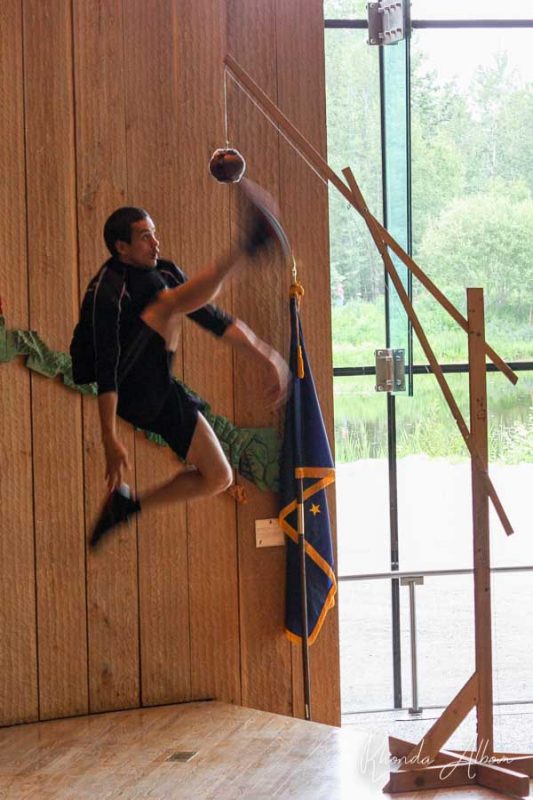
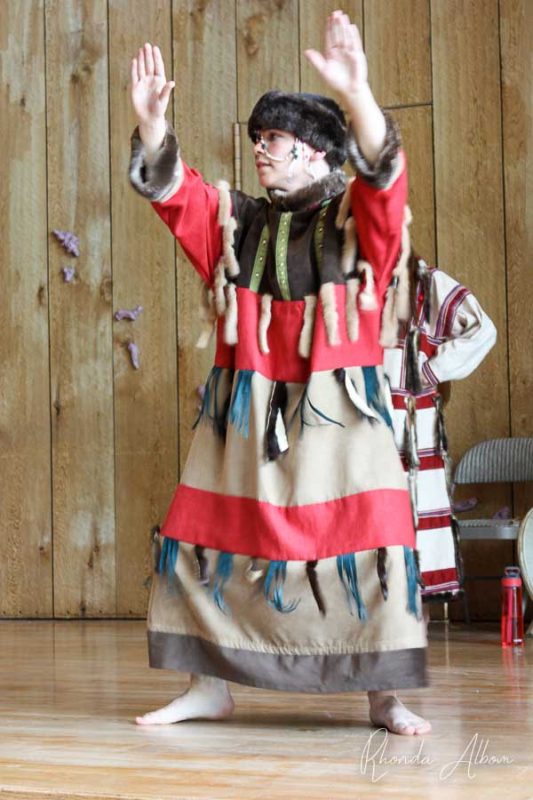
A unique experience greeted us. That is, on the stage, several impressive athletes practiced and competed for the upcoming World Eskimo Indian Olympic games. The youth, all Alaskan Natives, demonstrated several of the specific sports, including the One Foot High Kick. During this test of balance, power, and agility, athletes kick a suspended ball with one foot and then land on the floor using that same foot. We watched in awe.
After reviewing the schedule for the day, we returned to “the Gathering Place” twice. Once to watch native song and dance. The other time to listen to a storyteller.
Village sites a the Alaska Native Heritage Center
Venturing outdoors, we followed a path through the wooded area around Lake Tiulana, “traveling through Alaska,” and visited each of the six authentic life-sized Native dwellings.
At each location, we were greeted by Culture Bearers who helped us understand Alaska’s indigenous people and their traditional ways of life. Our private guide enhanced the experience even more.
We learned about hunting, living conditions, meeting houses, and traditions. The Culture Bearers in each location were fascinating, informative, and welcoming. We asked questions and learned.
A few interesting details
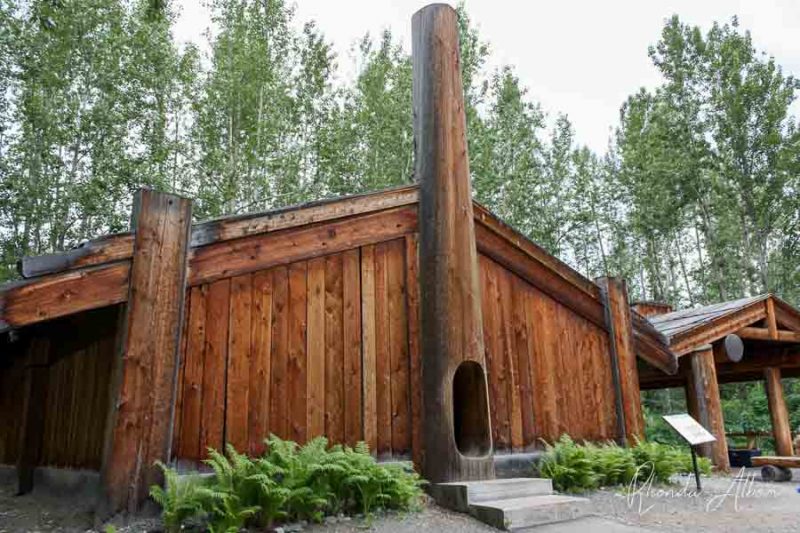
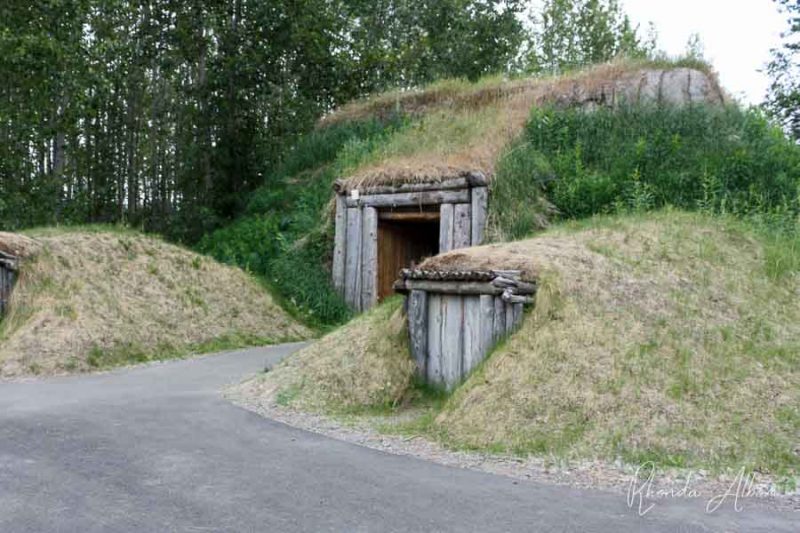
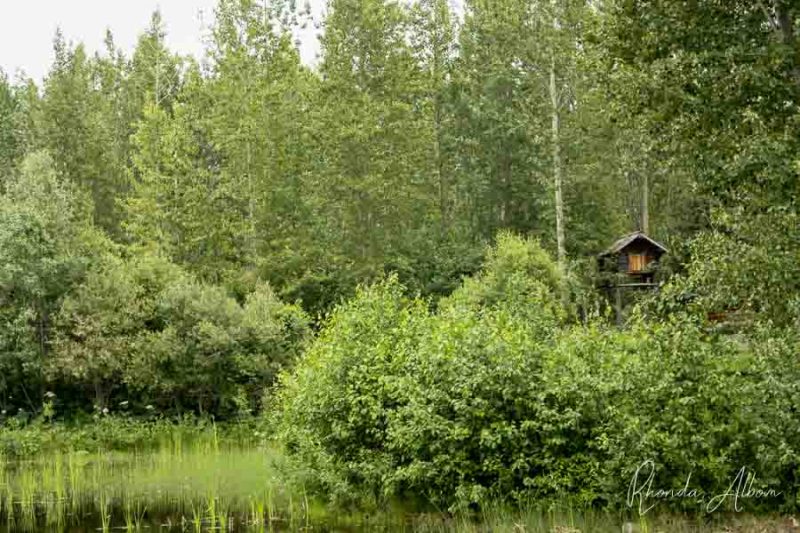
The low-to-the-ground doorways seen in nearly all of the dwellings fascinated me. Historically, they serve many purposes
- Maintaining heat
- Keeping out bears
- Allowing only one person to enter at a time, including enemies, therefore making it easier to defend. As a result of this, peaceful strangers enter backward to show they were defenseless.
- In a similar fashion, the Alutiiq had a staircase leading in from a small ceiling entrance.
- And, in the case of the Yup’ik and Cup’ik people, there were two entrances: the large house was for the men, while the smaller doorways were for the women.
Advantage of having a guide
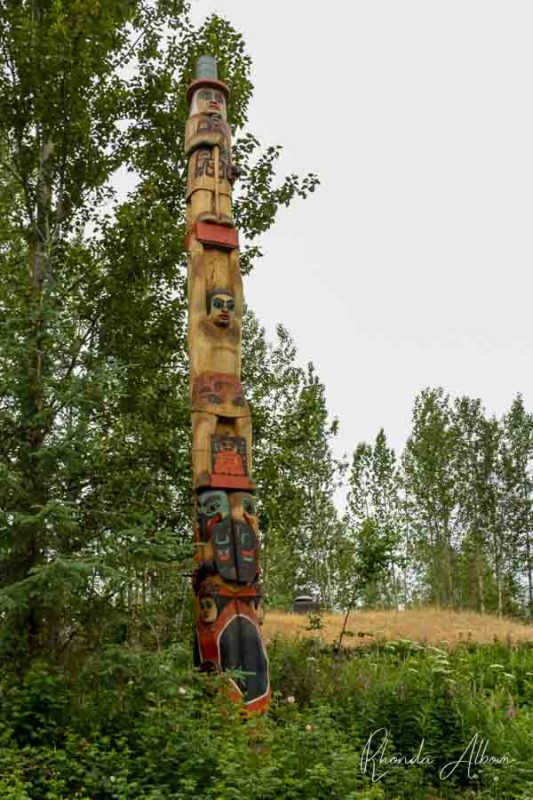
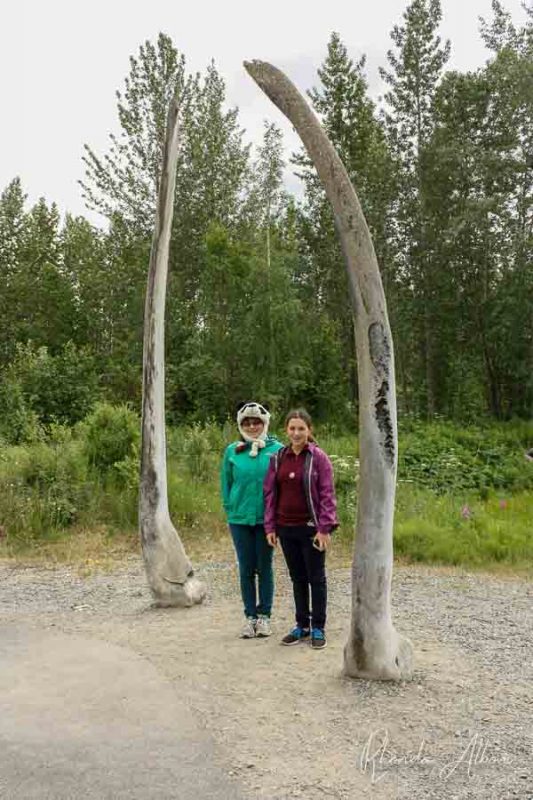
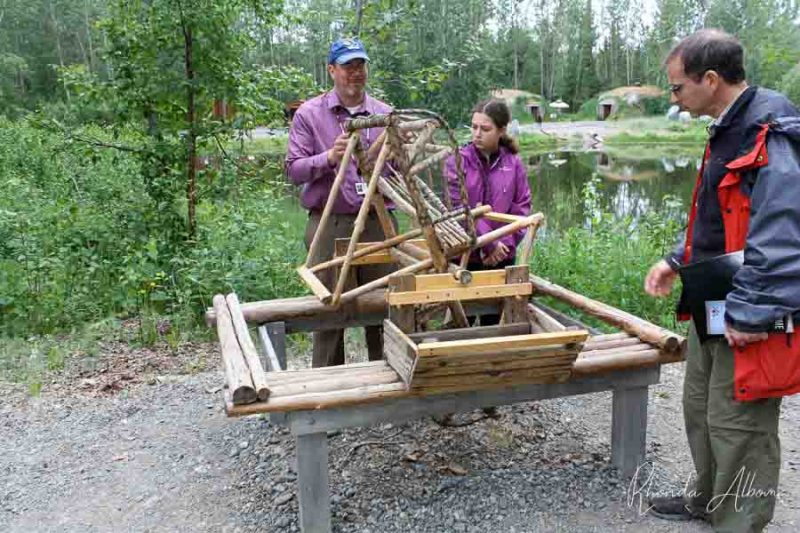
While the stories told by the Culture Bearers at the Alaska Native Heritage Center dwellings added to our visit, it was the personal enhancement from our guide that made our visit extra special.
For instance, when our guide showed us the intricate weaving in some of the baskets, he proudly added that his wife’s grandmother was the best basket maker around.
Similarly, when we were outside of the Athabascan dwelling learning how the salmon wheel was used to catch fish, our guide added that while it is no longer legal to build new salmon wheels, those that already exist are grandfathered in. He hopes to one day have one handed down to him.
The Hall of Cultures at the Alaska Native Heritage Center
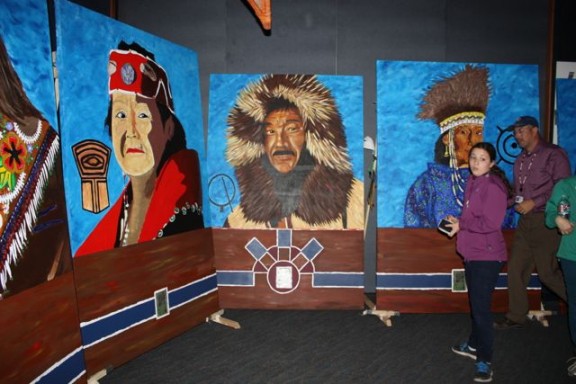
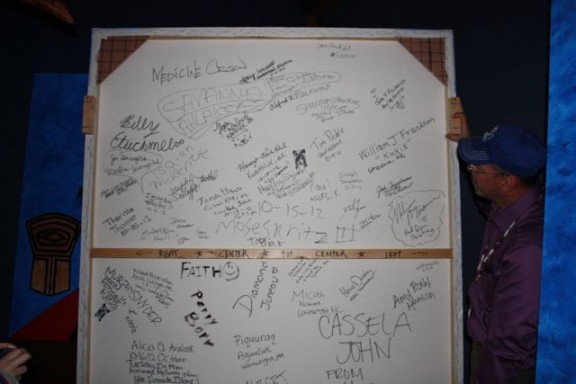
We returned indoors, this time heading to the Hall of Cultures, another cultural learning opportunity. Amongst the arts and crafts found and created here, our guide focused on one impressive community project.
This collection of giant murals is a collaborative effort. Not only are they beautiful, but every community member who participated in any way can sign their name on the back of the artwork.
Husky dogs and dog sleds
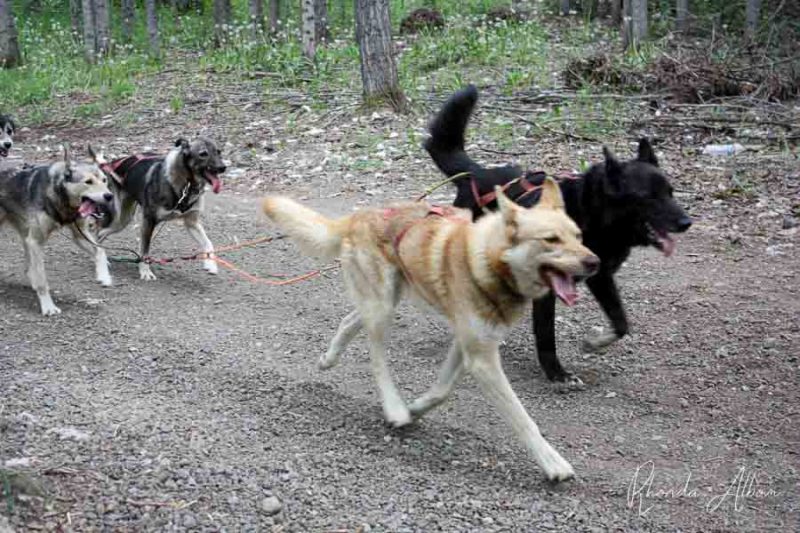
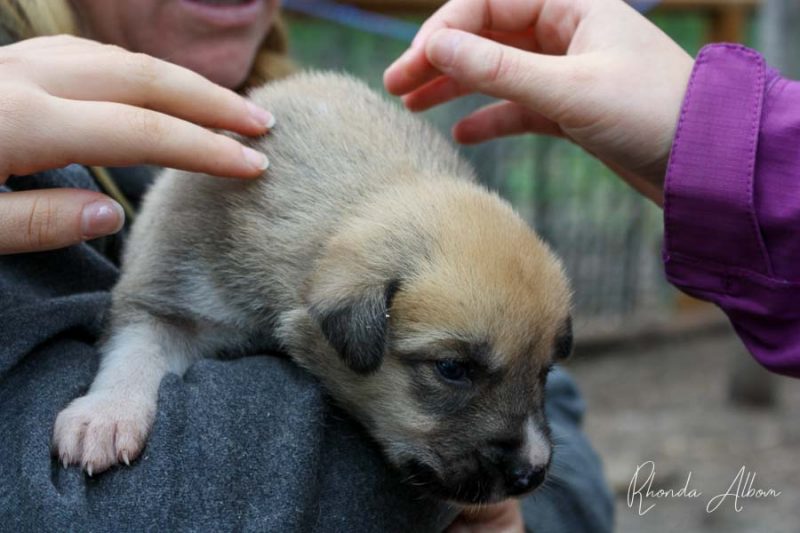
Honestly, I am not sure if husky dogs are still kept on the grounds.
The images are husky dogs belonging to John Baker, the 2011 Iditarod winner. These dogs used to live on the grounds, breed there, and a team of them were used commercially for dog sled rides. As we had seen demonstrations of this in Denali, we just wanted to pet the three-week-old puppies.
Visiting the Alaska Native Heritage Center
The center opened in 1999 and is one of the must-do activities in Anchorage.
The center is located at 8800 Heritage Center Dr. in Anchorage, Alaska. If you have your own vehicle, it’s about a 7-minute drive from the Tikahtnu Commons.
Hours and transit vary by season:
Summer season: (mid-May to mid-September)
The center is open from Tuesday to Saturday in the summer, with open hours from 9 am to 5 pm.
Getting here in the summer is super easy as in addition to the option of driving, there is a shuttle service. Check for shuttle bus time and pick-up locations.
Summer activities are more varied, and in addition to guided tours, they include cultural dance performances, demonstrations of native games, arts and crafts available for sale, and more.
Winter season: (mid-September to mid-May)
The center is open from Monday to Friday in the winter, with open hours from 9 am to 5 pm.
Winter admission is free (at least it is in 2023).
Final thoughts
One of my favorite things about the Alaska Native Heritage Center is its ongoing efforts to keep culture and history alive by training and working with young people every day. For example, in the Tlingit dwelling, our teen found a paddle that had been carved by the man who picked us up from the airport the night before. (He was the driver from the hotel, and he told us to look out for it).
The Alaska Native Heritage Center is a great way to spend an afternoon. It is by far the best exposure we found to learn about the Alaskan native culture.

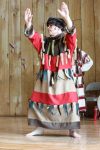
Beth Albertson
I was in Alaska last year. Now I am sorry we missed this place. Too bad I hadn’t read this last year.
Elise Fallson
Wow, that’s amazing and the jaw bone is huge. Love learning about different cultures and customs. The Alaska Native Heritage Center looks like a place I’d love to take my kids. I bet it’s great for people of all ages.
Anonymous
Wow, that’s amazing and that jaw bone is huge.
The Alaska Native Heritage Center looks like a place I’d love to take my kids. I bet it’s great for people of all ages.
Janet
We are going on an Alaska cruise next month. I will be sure to visit this centre!
Julia Simonson
This sounds like an amazing place. I hope we get to Alaska soon!
L. Diane Wolfe
That jawbone is huge. I remember visiting an authentic Indian reservation (as in, not modernized) when I was in grade school and it was fascinating.
Julie
It’s amazing when you look at the size of that jawbone! Lots of interesting customs including how strangers entered backwards.
Joyce
Awww. What a sweet baby. I’d just want to pet the puppy, too.
Alex J. Cavanaugh
Some of those things I’ve never heard of. Your kids are learning so much. And no way I could kick that ball, let alone land on my feet.